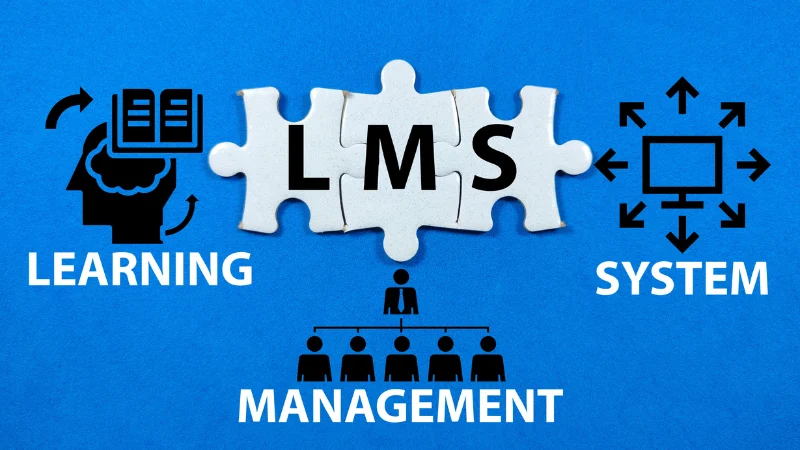Why Banks Need an LMS to Keep Up with Regulatory & Security Training
Discover why banks need a LMS to stay compliant with regulations, security training, and streamline cost-effective employee education.

Banks today are operating at a pace where they are expected to keep up with the recent changes in regulatory and security requirements. With regulations becoming ever more complicated, staff must be kept up-to-date and compliant. In this dynamic environment, a Learning Management System (LMS) provides one potential solution that automates the entire training process while helping ensure compliance.
Gaining Insight into Regulatory Challenges
Financial institutions face many regulations that exist to keep the economy stable and protect consumers. These laws are not up for debate in terms of compliance; they are mandatory. The details are complicated, and without training, they can be very hard to navigate without resistance, leading to the need for an LMS in banking.
Moreover, regulations are constantly changing, making it mandatory to update the questioned materials frequently. With no structured method of delivering these updates, banks run the risk of non-compliance. LMS implementation ensures that all employees are provided with the same information at the same time, thus minimizing the risks of outdated information causing expensive mistakes.
Enhancing Security Training
Extending to cybersecurity threats, they never stop evolving themselves and become a big security risk for financial institutions. Maintaining customer trust can be a challenge without effective security measures to safeguard sensitive data. One of the primary elements to achieve this is effective security training.
In addition, LMS allows for custom training for different roles within the organization. Different departments pose different security threats, and many functions require specialized knowledge. With the use of LMS, banks ensure that employees get training relevant to such scenarios making them prepared to resolve particular security issues.
Efficient Training Delivery
Traditional training methods can be time-consuming and resource-intensive. In contrast, an LMS simplifies the training process, enabling employees to access the materials when it is convenient for them. A lower risk of downtime is also one of the advantages, as employees can deliver training without affecting their work.
Secondly, LMS offers tracking features that managers can use to see how employees are progressing and where the gaps lie. This functionality helps hold individual users accountable and allows for specific remedial action in line, thus making the training more effective. Banks also use LMS to take their training programs to the next level and keep their employees updated and compliant.
Cost-Effective Solution
Traditionally, training methods are hugely costly, but using an LMS provides a cost-effective alternative solution. Physically attending the training sessions requires a high price due to venues, travel, and printed materials. A learning Management System eliminates these expenses and offers a digital platform for training delivery. This strategy cuts costs and enables funding to be diverted into other vital areas.
In addition, an LMS helps banks scale their training programs seamlessly. When organizations grow, training needs to grow, too. While it grows, an LMS takes care of this and ensures that all new hires are trained consistently. These scalable solutions make it possible for even the largest of institutions to remain compliant and secure without the cost-prohibitive nature of such a solution.
Improved Knowledge Retention
One of the biggest problems with training sessions is difficulty retaining information. Typical training methods have been responsible for information overload, sparking very low real retention. This is where an LMS comes in handy, providing interactive and engaging content. Quizzes, videos, and simulations reinforce understanding and retention, guaranteeing employees internalize essential information.
It also enables repeating and reinforcing key concepts within an LMS. Employees can review training materials whenever required, which helps reinforce the learning process and helps them retain the concepts better. This not only helps employees retain information for a longer time but also cuts back the number of times they come in for retraining/refresher training.
Adjusting to Technological Progress
The transformation of the financial industry has accelerated rapidly with the advent of various game-changing technologies. Thus, banks will have to adapt to these changes as well, utilizing the latest technologies in their operations. An LMS makes this adaptation easier by training employees on multiple new technologies needed by the employees and keeping them updated about industry trends.
An LMS also allows integration with other systems, enabling new tools and technologies to be quickly integrated into existing functionality. With this integration, the training would remain relevant, exercising its syntax with the organization’s evolution in technology, and every process would be more efficient and effective.
Conclusion
With the industry’s ever-evolving and highly regulated nature, banks have no choice but to offer effective training solutions. A good LMS has a wide range of delivery options for the content it can cover, from regulatory-related training to security training to address compliance and improve security. An LMS makes training easier for financial institutions by lowering costs and improving knowledge retention. Adopting this technology prepares banks to ride the challenges of the 21st-century financial space.



